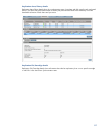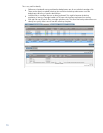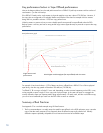
76
Tape Offload/Copy from D2D versus Mirrored Backup from Data Source
A summary of the supported methods is shown below.
For easiest integration
For optimum performance
Backup application copy to tape
Separate physical tape mirrored backup
The backup application controls the copy from the D2D
appliance to the network-attached tape drive so that:
It is easier to find the correct backup tape
The scheduling of copy to tape can be automated
within the backup process
This is a parallel activity. The host backs up to the D2D
appliance and the host backs up to tape. It has the following
benefits:
The backup application still controls the copy location
It has the highest performance because there are no
read operations from the D2D appliance
Constraints:
Streaming performance will be slow because data must
be reconstructed
Constraints:
There are two separate backups on the D2D appliance
and tape
It requires management if two backup processes and
will require the scheduling of specific mirrored backup
policies
When is Tape Offload Required?
Compliance reasons or company strategy dictate Weekly, Monthly, Yearly copies of data be put on tape and
archived or sent to a DR site. Or a customer wants the peace of mind that he can physically “hold” his data on
a removable piece of media.
In a D2D Replication model it makes perfect sense for the data at the D2D DR site or central site to be
periodically copied to physical tape and the physical tape be stored at the DR site (avoiding offsite costs)
Backup application tape offload at D2D target site
1. Backup data written to Source. D2D
3. All data stored safely at DR site. Data at D2D
target (written by D2D source via replication) must
be imported to Backup Server B before it can be
copied to tape.
2. D2D low bandwidth replication


















